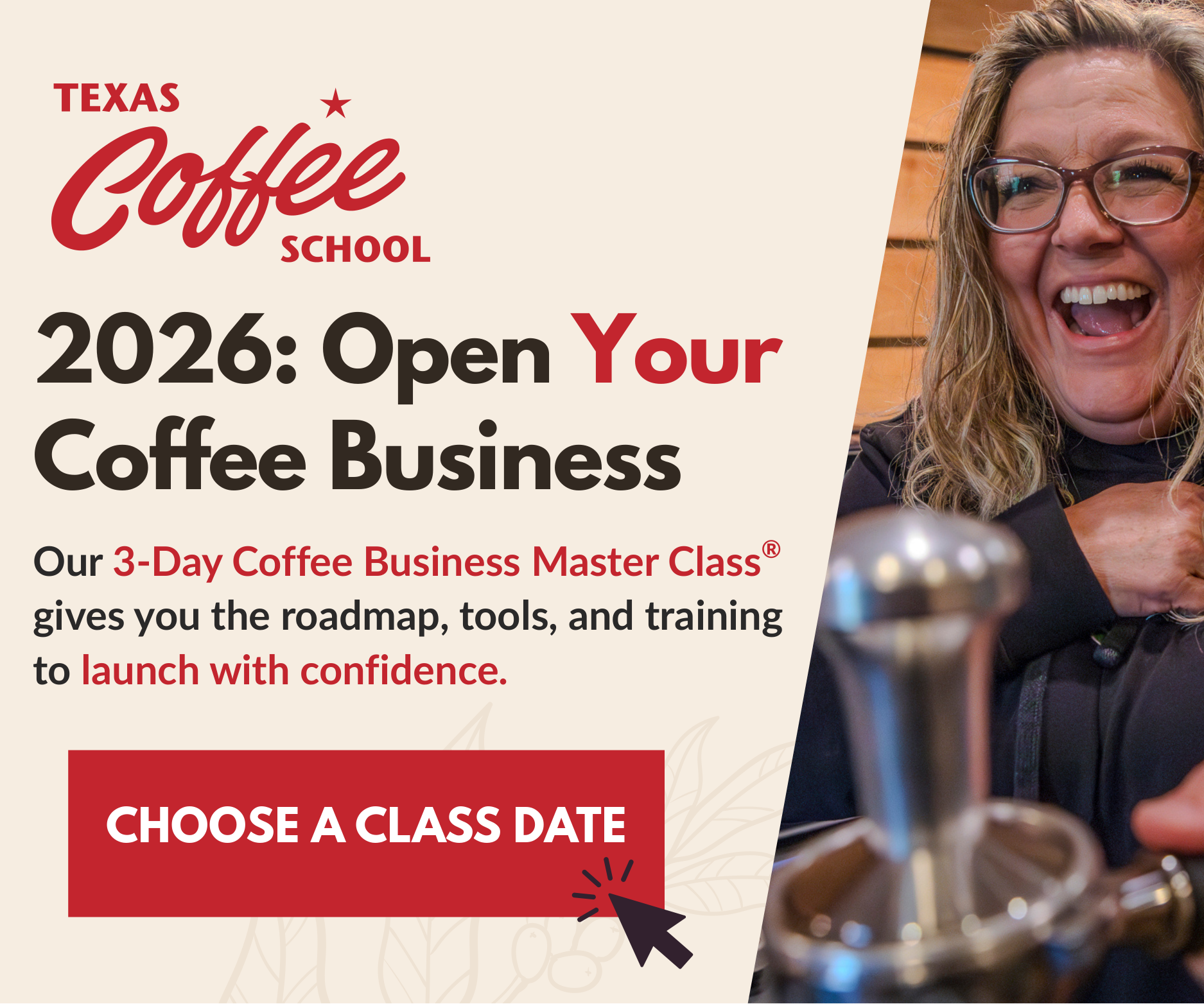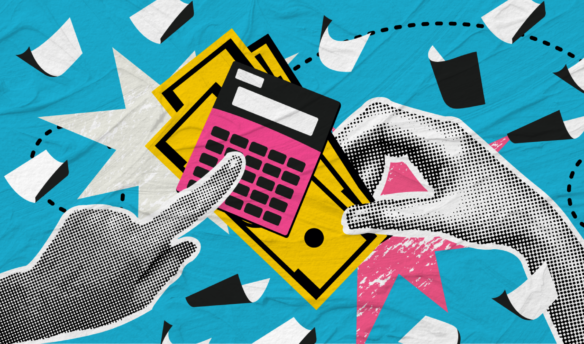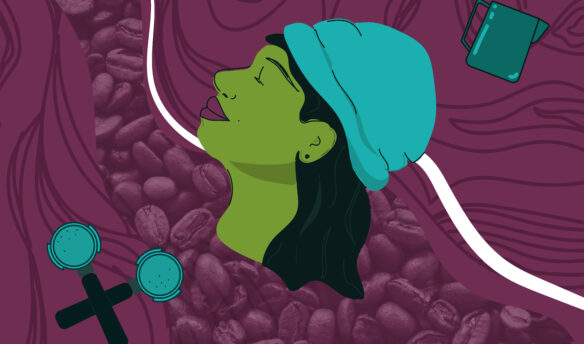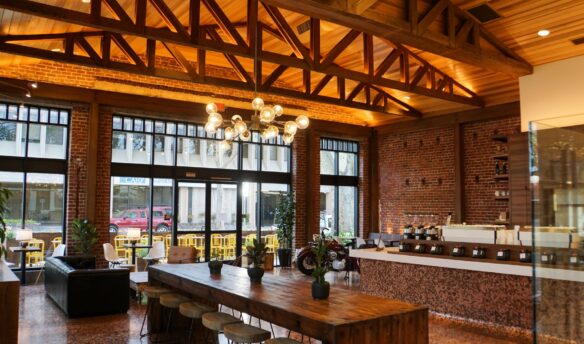LONDON—House music. Check. Hipper-than-thou haircuts. Of course. A hell of a lot of coffee. Most definitely. Rigged up in the industrial chic surroundings of East London’s Old Truman Brewery, the London Coffee Festival is a four-day caffeine-fueled extravaganza. Now in its seventh year, the LCF is a four-story love letter to coffee, from beans to packaging, masterclasses to full blown competitions, and it’s become one of the most important dates in the coffee calendar.
The sheer size and level of participation at the LCF makes it a good place to take the temperature of what’s what in the coffee world. This year, there was a big emphasis on waste and sustainability. Taking some time out between judging comps and starring in panel discussions, 2018 World Barista Champion Agnieszka Rojewska had no shortage of things to say on the topic, emphasizing that the coffee industry needs to take responsibility for what gets thrown away.
 “We produce the most trash in the restaurant industry…coffee bags, coffee cups, lids. There are already recyclable cups, but roasteries could do the same with bags,” she says. “We also need to look at the coffee grounds—they can be used in soil and in skin cream but those solutions need to start higher up.”
“We produce the most trash in the restaurant industry…coffee bags, coffee cups, lids. There are already recyclable cups, but roasteries could do the same with bags,” she says. “We also need to look at the coffee grounds—they can be used in soil and in skin cream but those solutions need to start higher up.”
Rojewska says it’s about education too.
“We need to show people that small steps make a difference,” she says. “People often think in a global way and believe that what they do as individuals won’t change things. We need to change that attitude so I think zero waste will continue to be a huge trend but everything depends on the customers and how they behave.”
Simplified Sustainability
What’s good for the environment increasingly makes good business sense too. Tony Small believes—probably for good reason—that his company, Decent Packaging, is well-placed to take advantage of the backlash against single-use paper coffee cups. The standard cups you see at outlets across the world are lined with plastic which makes them difficult—and expensive—to recycle. By contrast, Small’s cups are made from paper from managed plantations; they’re then printed with water-based ink, while the inner lining is made from plant starch. He says this makes it a no-brainer for consumers.
“We find that to have any impact we have to simplify sustainability and the best way to do that is to make packaging from plants which you can compost along with food waste,” he says.
Even the lids are fully compostable. And the demand is certainly there: Decent Packaging is now branching out to the U.K. having started out in New Zealand five and a half years ago, and so far, it’s sold over 100 million cups.
Eliminating Waste
Single-use coffee cups aren’t the only bad guys. Coffee pods, so beloved of time-conscious consumers, are also in the firing line because of the difficulty in recycling them. Some of the large manufacturers like Nespresso do provide recycling schemes, but start-up manufacturer Halo has developed what it claims is the first fully compostable pod. David Foster, Halo’s founder, says his philosophy is simple: “We want to eliminate waste.”
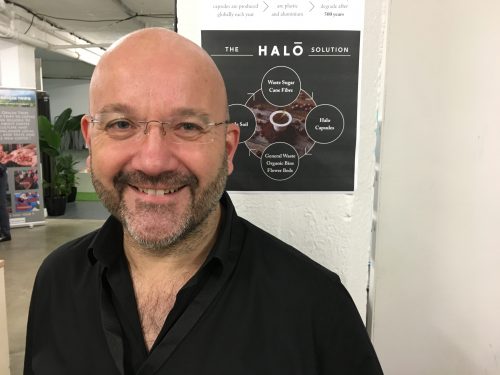
When Foster explains what goes into the capsules and packaging, it can make one wonder why other companies aren’t doing the same thing.
“The capsules are made of what is essentially waste sugarcane,” he says. “When it becomes wet it’ll break down in four weeks. We’ve made sure everything around the capsules is compostable: the label, the lid of the capsule, the box, the ink, the laminate that goes round the outside.”
But you have to pay for those environmental credentials: they work out to around $1.30 each for a box of 10.
Glamorous, Not Generic
Of course, the coffee festival isn’t just about saving the world. As with previous years, the LCF’s glamorous side was very much on show in 2019, particularly with the cocktails (mostly booze and coffee in various heady permutations). It would be difficult to find someone who knows more about the alchemy of coffee cocktails than barista and mixologist Stephanie Rainbow, who was there acting as an ambassador for the Tia Maria Coffee Project. I caught up with her just before she headed to one of her several workshops.
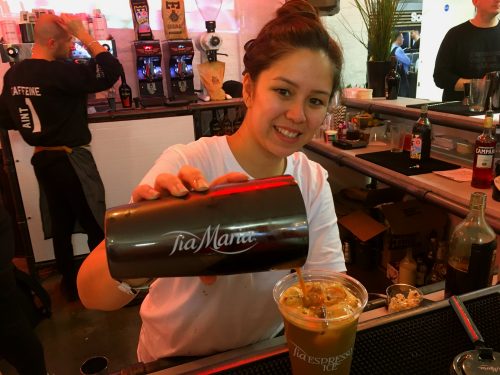
After not very much persuasion, Rainbow knocks one up for me. It’s easy to see why it’s got the internet buzzing: Sweet, a bit salty, and with an incredible hit of popcorn syrup, it pretty much ticks all the boxes. It’s a fun drink, but Rainbow doesn’t take long to get serious.
“You should treat coffee like a key ingredient, not just a generic shot of espresso,” she says. “You get bartenders who make their own tonic, for example, because they want to get the right balance of sweetness and bitterness, but then you could order a coffee cocktail and they’d use instant coffee.”
Rainbow says that these experiences feed in to what she teaches in her workshops, explaining what coffee to use and when.
“Take for instance the two most famous coffee cocktails, espresso martini and Irish coffee,” she says. “An espresso martini should have espresso in it. This might seem obvious, but some bars have started using cold brew. That’s fine, but call it a cold brew martini. And with Irish coffee, I’ve seen espresso being used, but traditionally it should be filter coffee because that’s where you get the mouthfeel. So we always teach people about the viscosity, the particles, the oils, and which coffee goes with which cocktail.”
Enjoying Every Aspect
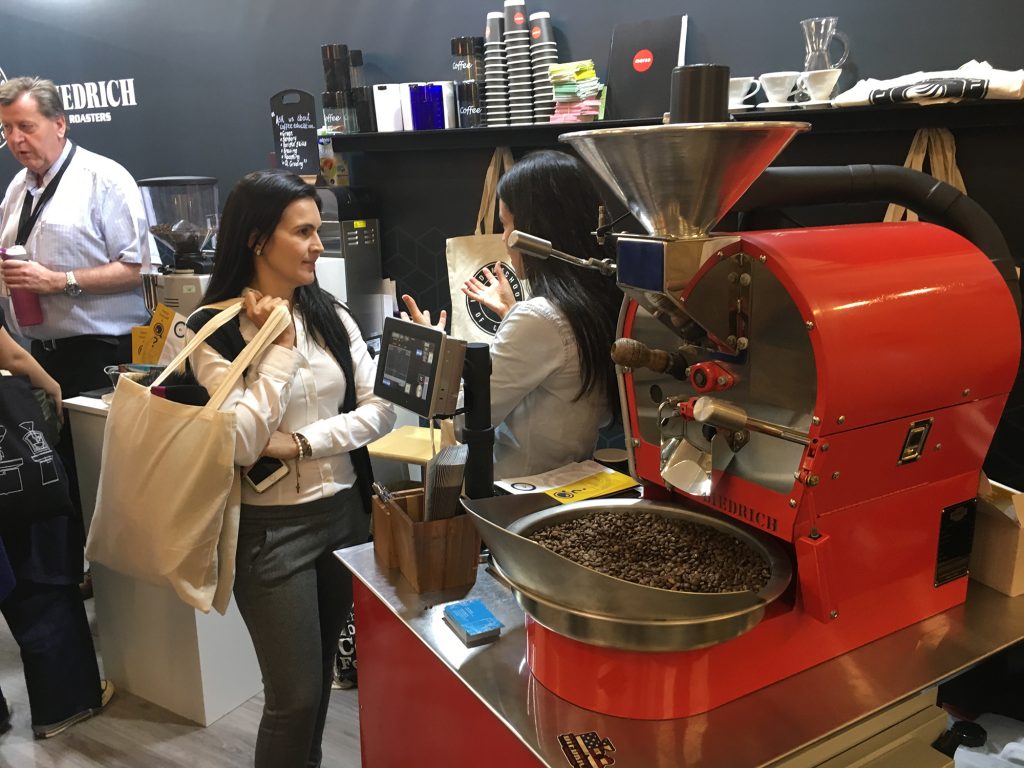
Rainbow’s creations are eye-catching, but then what’s a world class coffee festival if not a chance to show off a bit? The epitome of flamboyant caffeinated creations is surely latte art, of which Ben Lewis is an exponent. Still in his early 20s, Lewis is a relative newcomer to specialty coffee, but has already been making waves in the latte art universe with his technicolor creations.
“I wanted to incorporate etching and drawing into my coffee but there’s also a more practical reason: I use the art to promote myself and other businesses,” he says. “A lot of companies want their logo on coffee, especially when they want to spread the word through social media.”
I pushed to the front of the stage to watch him use food dye and colored milk to create several mini works of art, the highlight of which was an expertly etched Sonic the Hedgehog. But I couldn’t help wonder: Is it cheating to paint rather than rely on your pouring skills?
“This is just another element to what I do,” says Lewis. “I can also free pour, I’ve entered the big competitions which I’ve done well in. Coffee’s coffee, and you should enjoy every aspect of it.”
A philosophy which also seems to sum up the London Coffee Festival as a whole—in all its loud, ostentatious glory.



